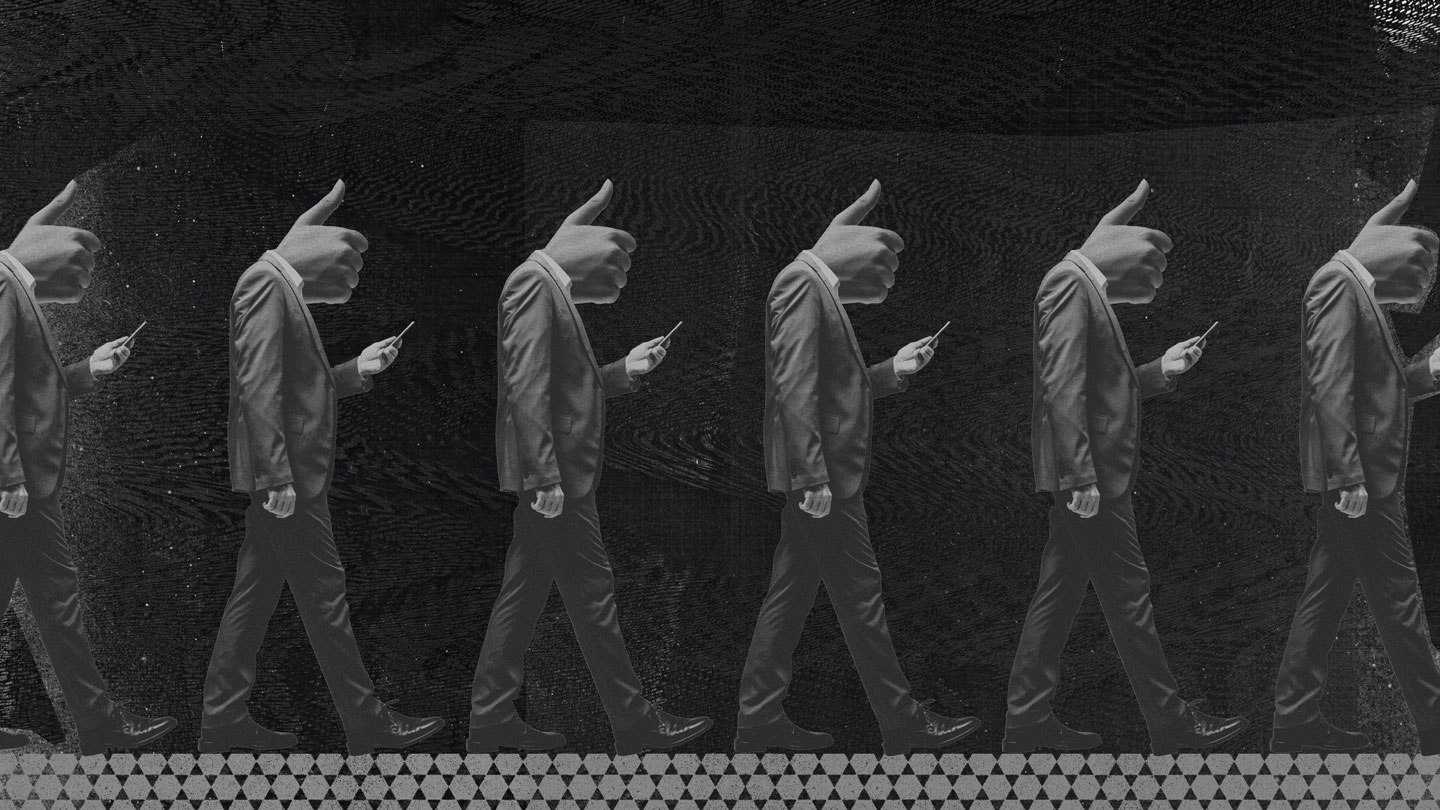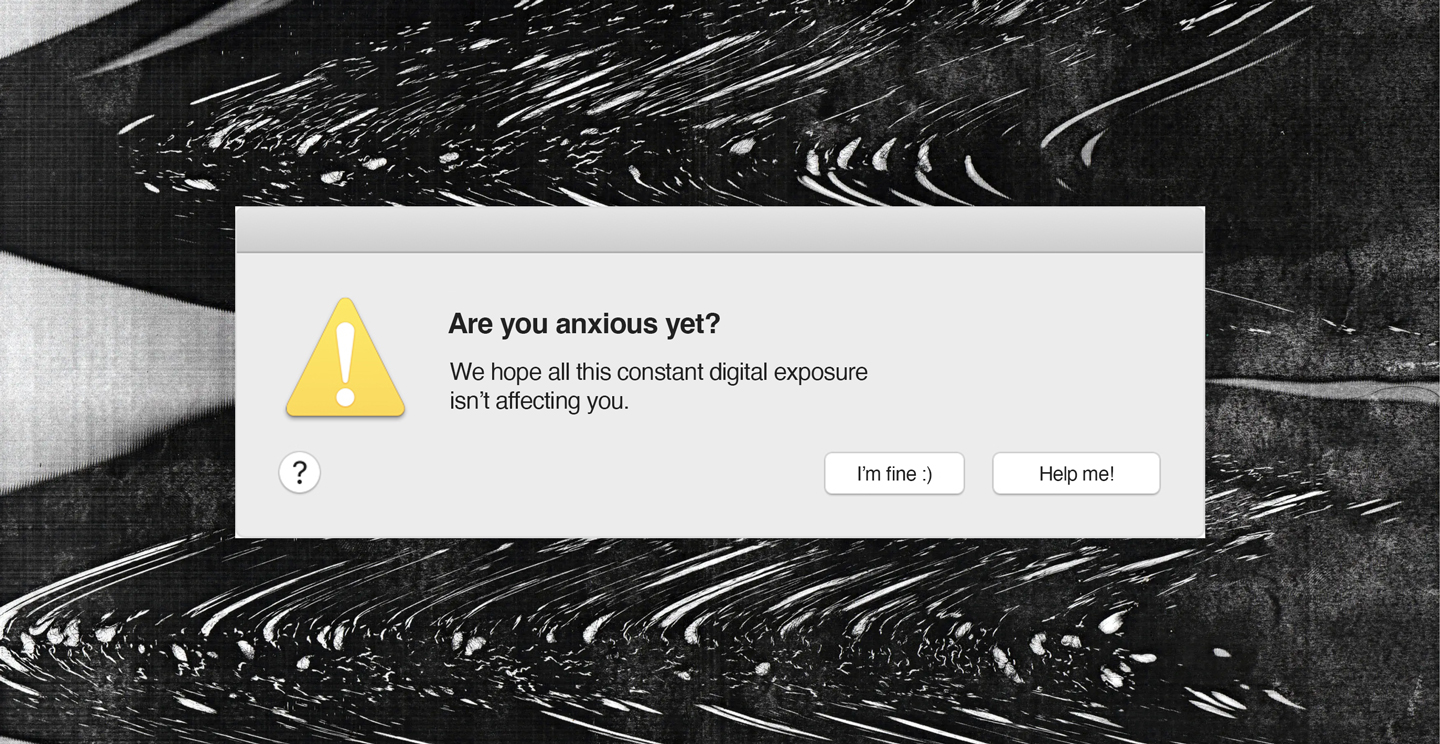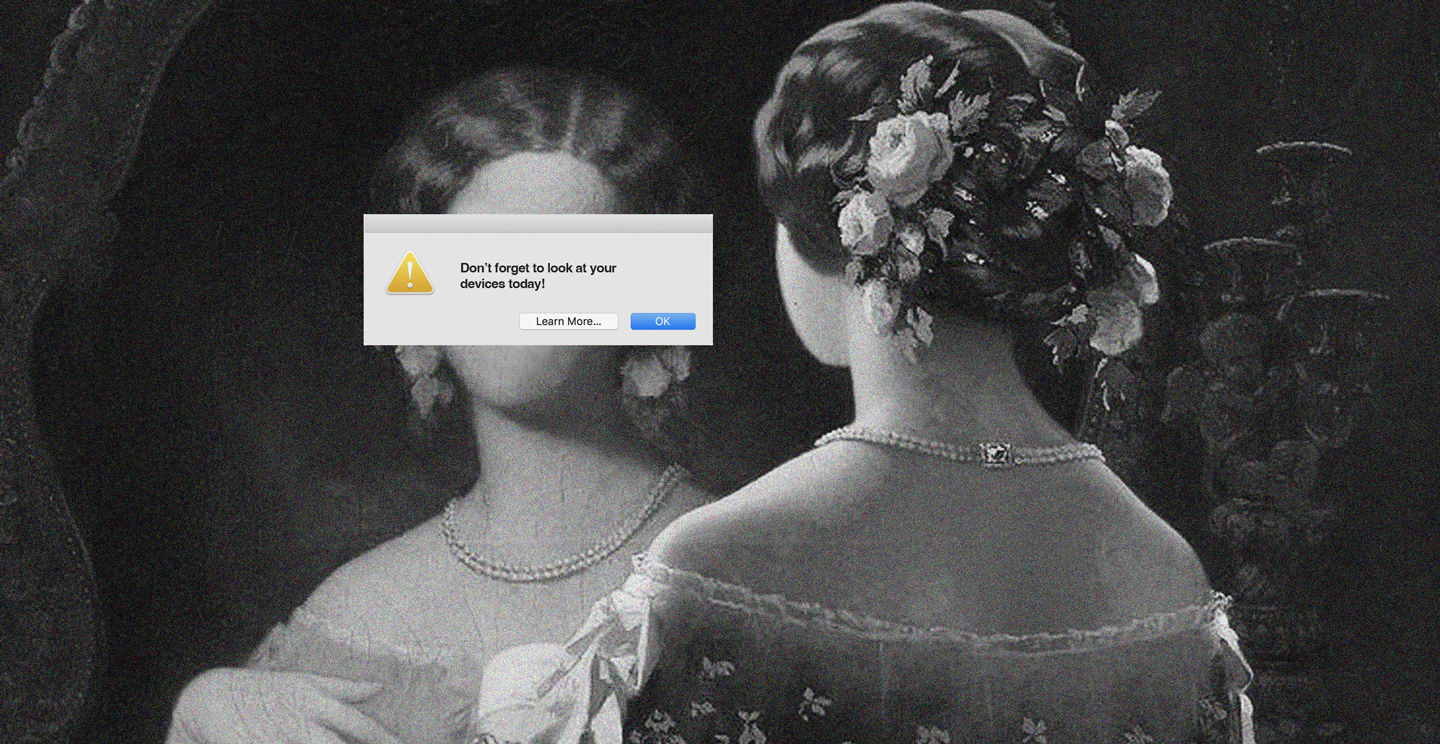We often surround ourselves with objects that demand our constant attention, although it’s not always necessary. This is true for all the spaces we inhabit, including our homes, leisure places, workplaces, and so on.
We carry our portable electronic devices 24/7, and we depend on them and the infodemic they are connected to for the enormous amount of information circulating widely and rapidly, including false or misleading news, on any issue in life. Unless they are wearables, we keep them close in our hands or pockets, like a permanent distraction, never separating from them.

Digital devices have become ubiquitous and are part of everyday life. Artwork courtesy of IM alumna, visual designer and artist Constanza Coscia
But it is not all about laptops, tablets and smartphones, as sometimes digital devices are even embedded in our furniture, such as home pods or wearables.
Today, technology has an incredible power that we can use to our advantage. It is our responsibility to understand it and use it in a respectful, kind and human way. If used mindfully, technology can help us overcome the subtle and constant anxiety fuelled by overexposure to information.
Digital devices here. Digital devices there. Digital technology is everywhere (so we live in an infodemic era)
The role of digital devices and the metamorphosis of how information tools are conceived today have generated a scenario of emotional fatigue. This impacts our mental health and spiritual well-being, spreading a feeling of anxiety related to continuous exposure to news created to attract users, often with very bulky messages, just to get a simple click.
The digital ecosystem we live in has ended up distracting us; instead of guiding us where necessary, screens have become the main focus. While technology allows us to have instant access to vast knowledge, it comes at a high price. It constantly demands our high-quality attention, which requires significant brain power – something that is not sustainable for humans.
Walking down a crowded street, we often see people completely immersed in their screens as they walk, oblivious to what is happening around them, including traffic; we have all experienced this at least once.

The widespread application of digital technology in daily life and the increase in screen time have led to an Internet addiction that negatively affects our mental health. Artwork courtesy of Constanza Coscia
This is why even large corporations, such as Google and Ikea, have recognised the importance of developing products that are responsible towards the user, in harmony with the environment and not pervasive unless necessary.
We are sharing our spaces with digital devices; homes, leisure areas, and workplaces are taken over by technology that is supposed to make our lives better. It’s a close, addictive relationship we cannot escape.
Why we are addicted to hyper-detailed information
We have become addicted to hyper-detailed information about almost everything. We rely on our digital devices to check the weather instead of simply looking out the window in the morning.

Among the negatives of digital life is that the vast wealth of information available at our fingertips makes our brains busier than ever. We incessantly check our devices that assault us with facts, pseudo-facts and rumours. Artwork courtesy of Constanza Coscia
But the information we really need, which is much less than we think, can be communicated more subtly through technology simply by interacting with our peripheral attention.
Use technology well: Like Frodo’s sword in The Lord of the Rings, an enchanted umbrella can tell you when things are getting dangerous, aka when it’s going to rain. Without unnecessary information
Imagine a cloudy day when you are about to leave the house. You don’t need to know the exact temperature, the amount of water per minute, or the percentage of humidity to decide whether or not to take your umbrella; you just need to know whether or not it will rain.
This is why MIT researcher, entrepreneur and author David Rose has created a smart umbrella that informs you of the likelihood of rain through a small warning light on the handle. The flashing intensity corresponds to the probability of showers, providing you with the necessary information at a glance without the need to check your phone. This approach addresses your peripheral attention, allowing you to stay informed while keeping your focus on other tasks.
Scientist, writer, award-winning entrepreneur and MIT Media Lab lecturer David Rose at TEDxBeaconStreet in 2014 as a pioneer in the field of human-centred technology
In his book entitled ‘Enchanted Objects: Design, Human Desire, and the Internet of Things’, Rose focuses on the future of the Internet of Things and how these technologies will affect the way we live and work. ‘Enchanted objects’ is a term he coined to define “ordinary objects with extraordinary capabilities,” referring to technological products that can interact with humans without requiring them to make any cognitive effort beyond that necessary to access a given piece of information at the most appropriate time and place. He holds that our relationship with these objects would be more natural than with our smartphones.
David Rose himself realised that the current development of technology has led to an uncontrolled spread of screens, fearing that these could be incorporated into all kinds of environments and products, from furniture to roads, in the future. If one looks around, it is obvious that this is already happening.
Designing a human-centred (technological) environment
The designer’s role starts with the mission of designing a human-centred (technological) environment. The aim is to develop products that can adapt to the natural experience, harmoniously interacting with the senses through materials such as wood, silicone and textiles in soft shapes.
Visualizza questo post su Instagram
To better visualise the concept, we can take a closer look at a particular work developed by LAYER, a premier design studio specialising in strategy, industrial design, engineering, branding and digital design, founded by Benjamin Hubert in London. The work was presented in collaboration with Deutsche Telekom during the Milan Design Week 2022 debut of this German telecommunications company. Entitled ‘Concept Connectivity’, it was a series of products that offered a new style for devices used in contemporary homes. The collection included a router, a mesh repeater, a set-top box with a soundbar and webcam, a set-top box, and a remote control. All pieces in the collection feature simple, delicate lines, discreet interfaces and materials designed to enhance the tactile experience.
To conclude, I would like to share the powerful motto of the Milan-based Global Creative Consultancy I MILLE, for which I applied: “Technology has disrupted the world. Our job is to redesign it.”
Mattia Aurelio Ferrari
Alumnus of the Master’s programme in Design Management & Strategic Innovation, Milan



